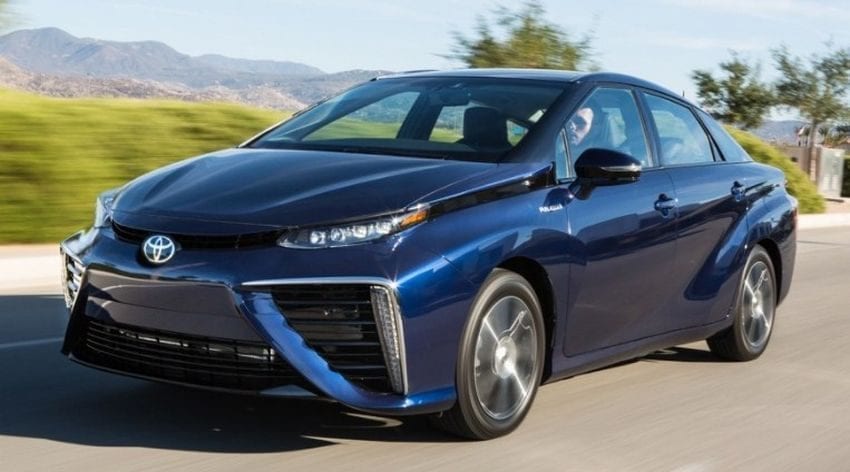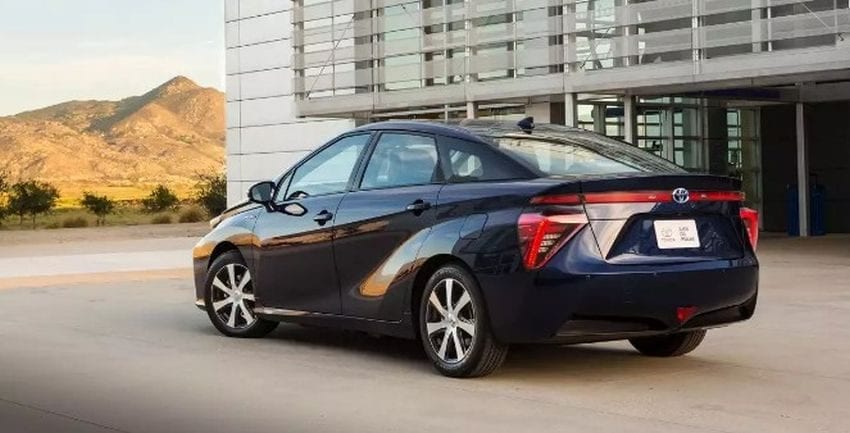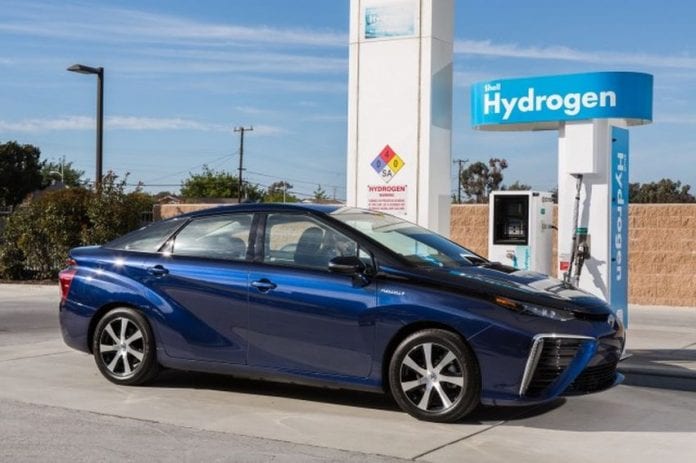The 2017 Toyota Mirai is a new model that looks similar to the new Prius, but it grew few inches in all directions compared to a popular hybrid, and the two do not share the New Generation Architecture as it is based on the stretched version of the latest Prius v. The new Mirai is also similar to Camry in terms of size, but it has less usable space inside because it incorporates all of the fuel-cell and battery related gear. Furthermore, it is about 500 pounds heavier than a Camry.
In Japanese, Mirai stands for future, which is no wonder since the vehicle is the company’s first example that uses hydrogen fuel cells thanks to which it can cover slightly more than 300 miles on a single tank. According to many, including Toyota, “hydrogen is the fuel of the future…and always will be.”

That is why you can see the 2017 Toyota Mirai sporting an AC synchronous electric motor which is borrowed from the Lexus RX 450h, and it produces 151 hp and 247 lb-ft of torque which are sent to the front wheels. Combined with the motor is a 1.7-kilowatt-hour, nickel-metal hydride battery which is used in the Camry Hybrid and it is topped up by the solid polymer electrolyte fuel cell stack.
There are two three-layer carbon-fiber tanks which are filled with hydrogen at about 10,000 psi of pressure, and this hydrogen is pulled from one of these two tanks by the stack. When it comes to fuel efficiency, the 2017 Toyota Mirai is one of the best as it is rated at 67 mpg-e combined. For those who are skeptic about this innovative technology, you should know that Toyota is confident and its fuel cell system together with the battery pack and most of the electrical hardware is covered by an 8-year/100,000-mile warranty.
The 2017 Toyota Mirai hasn’t gone through the IIHS and the NHTSA’s safety tests yet, but we know that it comes with the basic safety equipment such as airbags, anti-lock brakes, stability control and many other features. Even though there is a pre-collision automatic emergency braking, Toyota will not equip the new Mirai with the full Toyota Safety Sense suite, which is slightly surprising because it will be one of the rare company’s vehicles not to sport this.
Those people who like the Prius are also going to be fond of the Mirai as well. However, you really need to try hard not to notice a somewhat wooden steering feel and a sense of sluggishness and heaviness during acceleration. The Mirai goes from 0-60 mph in 8.9 seconds, and we know that it is not a race car, but it is just too heavy.
Just the fact that the 2017 Toyota Mirai drives normally as it does is impressive, and we will give props to Toyota for assembling a hydrogen vehicle. Even if the Mirai were perfect, the problem would be hydrogen refueling stations which are almost non-existent, making this tech suitable only to the rich tech geeks and eco-enthusiasts that live near the refueling infrastructure.
The first advantage of this car is that is has a lot of room for four passengers, but this vehicle also has longer range compared to most of the EVs available on the market. In addition, water is the only emission, so it is safe for the environment, and it is a really quiet vehicle the whole family could enjoy. On the other hand, the 2017 Toyota Mirai looks catastrophic (honestly), and it is sold only in California for now. As we have already mentioned, there is a limited number of fueling stations, but what we didn’t say is that fuel costs are unknown. Another thing that could steer away many customers is the price of $57,500 after incentives of $7,500 which is quite high.

The 2017 Toyota Mirai is a spectacular vehicle because it only shows us that it is a great time to be alive. We hope that its technologies will continue to improve and that Toyota will stick with it.









